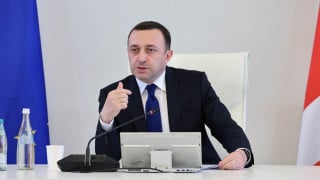Irakli Gharibashvili: “The GDP trebled in 11 years and increased from GEL 27 billion to GEL 85 billion.”
Verdict: FactCheck concludes that Irakli Gharibashvili’s statement is HALF TRUE.
Georgia’s nominal economy was GEL 27.2 billion measured in the national currency in 2012 whilst the estimated GDP for 2024 is 3.2 times more - GEL 85.4 billion.
If the size of a nominal economy trebles, this does not mean that the quality of life also increases three times. Over the years, consumer prices have also been rising alongside economic growth, particularly in recent periods.
In 2012-2023, the GEL exchange rate depreciated vis-à-vis USD by 58% from 1.65 to 2.61 which additionally affected the nominal economic growth.
If we exclude inflation and exchange rate effects, the real economic growth will be 68% in 2024 as compared to 2012, meaning that the real economy would increase 1.7 times.
Without additional clarification, nominal figures that are accurate may still lead to wrong conclusions. Therefore, FactCheck concludes that Irakli Gharibashvili’s statement is HALF TRUE.
Analysis:
The Prime Minister of Georgia, when presenting the processed draft of the budget, also talked about the GDP growth. In particular, he selected 2012 as the base period and stated: “In 2012, the GDP was around GEL 27 billion, meaning that the country’s economy trebled under our government in 11 years. In 2024, the GDP will be GEL 85 billion and it was GEL 27 billion.”
In 2012, Georgia’s economy was GEL 27.2 billion when measured in the national currency. In accordance with the Ministry of Finance’s estimate, Georgia’s GDP will reach GEL 85.4 billion in 2024.
If the Ministry of Finance’s estimate holds true – and there are no preconditions at this stage that it may change drastically – the nominal economy would really increase 3.2 times in 2012-2024 in a 12 and not 11 year period. There will be growth in the real economy, albeit at a lower rate.
Inflation increased the country's nominal economy and the nominal GDP per capita more as compared to real economic growth. Paying GEL 1.5 for a product that used to cost GEL 1 does not mean a person became richer.
In order for the economy to treble in 12 years, an average annual growth of 10% would have to be achieved whilst in fact a 10% growth was recorded only two times, in 2021 and 2022. The maximum growth rate was 5% in 2013-2019. It decreased by 6.8% in 2020 and the growth rate was 6.8% in the first nine months of 2023. A 5.2% economic growth is expected in 2024.
Let us consider Georgia’s real economy for 2024 as compared to 2012. If we assume that the 6.8% growth is going to be maintained until the end of 2023 and the 5.2% growth estimate holds true in 2024, then total growth will be 68%, meaning that growth is 1.7 times and not three times more as claimed by Prime Minister Gharibashvili.
Graph 1: GDP Growth 2012=100%

Source: National Statistics Office of Georgia and Ministry of Finance
In 2012, Georgia’s economy was GEL 27.2 billion and it had the same purchasing power as GEL 45.2 billion today. If we take into account an estimated 3% inflation in 2024, its purchasing power would reach GEL 46.2 billion.
If the GEL 46.2 billion economy increases by 68%, the result will be GEL 77.7 billion whilst the estimated size of the 2024 economy is GEL 85.4 billion. This nearly GEL 8 billion difference is explained by differences in the currency exchange. In 2012, USD average value was GEL 1.65 and it was GEL 2.61 in January-October 2023. Part of the GDP is made from the inflow of foreign currency.
Since 2012, it was only the year 2020 when Georgia experienced an economic recession and there was either double-digit GDP growth or a slight but nevertheless economic growth in other periods. Economic growth is expected for 2024 as well. The size of the economy in 2013 was already higher as compared to 2012 and certainly, the size of economy in 2024 will in any case be higher as compared to 2012. The only question is by how much.
The statement about the “economy increased three times” without additional clarification would lead to the impression that it was the real economy that trebled and it was the quality of life and the population’s average real income that increased three times which means that they can now afford to purchase three times more goods and services. In reality, consumer prices also increased alongside nominal incomes and, therefore, the real economic growth rate for 2024 as compared to 2012 will be 68% instead of 200%. The figures named without additional clarifications may push for wrong conclusions and as a result, FactCheck concludes that Irakli Gharibashvili’s statement is HALF TRUE.








